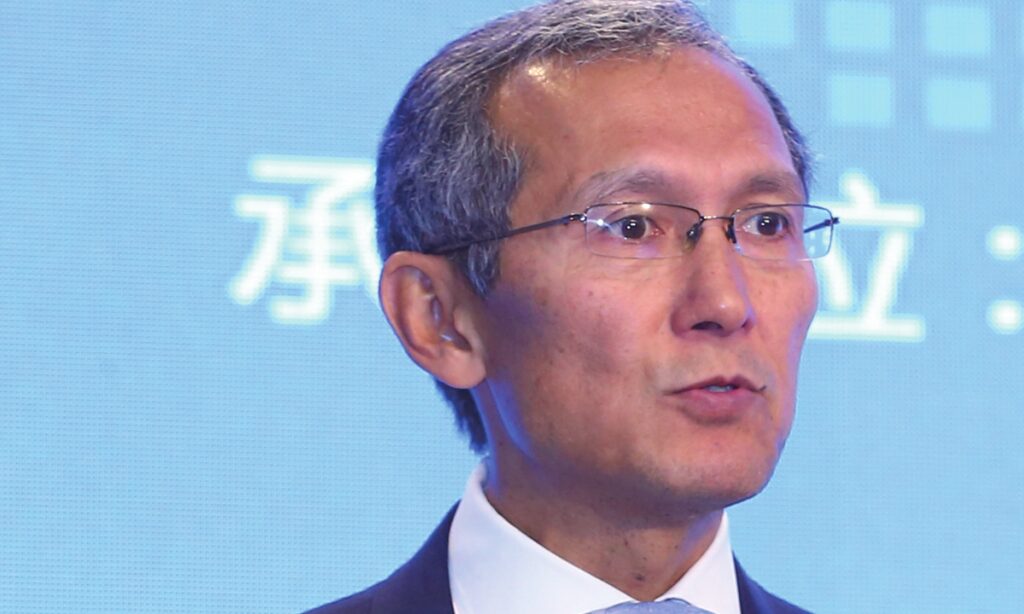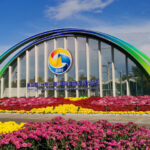The Belt and Road Initiative (BRI) is expected to bring people together, build trust and make common efforts to make our world a better place to live for everyone, restoring the principles of the old great Silk Road and bringing “a real Eurasian revolution” over the past 10 years, Djoomart Otorbaev, former prime minister of Kyrgyzstan, told the Global Times in an exclusive interview on the sidelines of the third Belt and Road Forum for International Cooperation in Beijing.
During the first 10 years, the BRI became a real global initiative. Ten years ago, when Chinese President Xi Jinping first proposed the initiative during a trip in Central Asia, we were expecting it would restore the principles of the old Great Silk Road of trade between China and Europe when Central Asia was a center of civilization and an extremely developed part of the world at that time, as we were not landlocked but a land-connected area, Otorbaev said.
“Ten years ago, we were quite enthusiastic that we may consider to be returning to the good times – the old great Silk Road,” he said, noting that a major phenomenon when it comes to achievements of the BRI is “a real Eurasian revolution.”
Over the past 10 years, a very efficient railroad bridge between China and Europe has been built through Central Asia, enabling business and logistics to explore new opportunities to trade through rail, which has become very efficient, the former prime minister of Kyrgyzstan said.
Central Asia will slowly become a transport hub between Asia and Europe, which will give the region better conditions for trade and a lot of opportunities to improve the regional economic situation. “Soon, Central Asia will transform itself from a landlocked to a land-connected area, not only in West-East connection but in North-South, as well.”
In 2022, the number of trains passing between Europe and China reached 16,000, Otorbaev said, noting that these numbers will continue growing this year.
Within the framework of the BRI, the development of a project for the construction of the China-Kyrgyzstan-Uzbekistan railway will begin, which Otorbaev has high expectations for, as it will shorten the distance between Europe and Asia by some 900 kilometers. “Although the landscape of the construction is difficult as there are mountains, but I have been to Laos and have seen in my own eyes the newly built China-Laos railroad also [goes] through the mountains,” he said.
“If it’s achieved in Laotian territory with more than 1,000 kilometers, it can be achieved in Central Asia with [a line of] 280 kilometers through the mountains. It will be very bright, efficient result of the initiative, especially important for Central Asia,” he said.
In his new book Central Asia’s Economic Rebirth in the Shadow of the New Great Game, he analyzed of the influence of different economic powers on Central Asia, and surprisingly, he found China is not yet the biggest investor there, he said. “The BRI is not yet realizing all its potential. The BRI has not yet become an enormous contributor to our economy, but it will come.”
The Third Belt and Road Forum for International Cooperation (BRF) is being held in Beijing from Tuesday to Wednesday, as the year marks the10th anniversary of the BRI. As China has signed BRI cooperation documents with more than 150 countries and over 30 international organizations, it also the time and the main priority for the forum to discuss what is next, what lessons learned and achievements received and what should be improved, Otorbaev said.
“What I would like to underline is that we have to target so-called high-quality Belt and Road. It’s not necessarily only trade of energy, resources or not only transport connectivity, but we have to establish people-to-people connectivity,” he said, noting that young, talented people must be pushed to the fore in being innovators of the 21st century.
While some Western media often hype the “debt trap” of the BRI , Otorbaev said that the Chinese government is offering developing countries opportunities to borrow. He went on saying that there is a lot of speculation, especially in Western media, that China specifically gives money to emerging countries to put them into a debt trap and then exchange debt for certain assets, for example, deposits of natural resources for infrastructure projects, he noted. But it is not the case, because China is not the biggest donor in the world, he said, adding that the biggest donors are private investors: commercial banks, which issue sovereign bonds.
These bonds are currently very expensive because of the overall inflation level around the world, Otorbaev said. These private investors which issue certain bonds are more dangerous for countries than sovereign donors, he added.
While some observers often refer to Central Asia’s five countries as Russia’s sphere of influence, Otorbaev believes that China and Russia now have good political relations, and they behave differently in Central Asia depending on national interests. “We are in good relations with both China and Russia,” he said.
(Global Times)




